Learn how to make Fermented Hot Sauce – a simple way to enhance and preserve your abundance of garden chilies to use throughout the winter. Full of healthy probiotics, this easy recipe has many health benefits. Plus it just tastes good! Video.
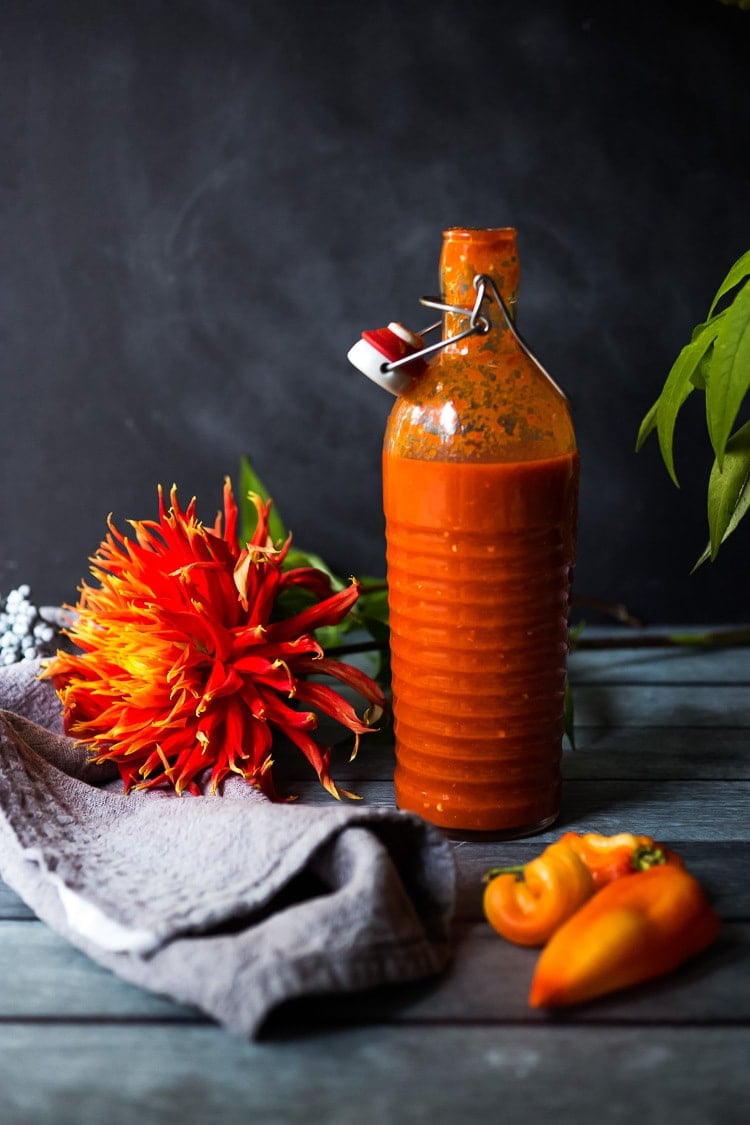
For many of you with gardens out there, this is the season of harvesting. Here’s a simple way to use all those chilies you’ve got growing out back and turn them into something that will bring you a little kiss of sunshine during the cold months – Fermented Hot Sauce! Now, before you feel intimidated – know that this only takes 20 minutes of actual hands-on time and no special equipment. It’s ridiculously easy!
Why I prefer fermenting over canning:
- Healthier: Fermentation creates “ALIVE” food- incredibly rich in probiotics. These good bacteria are living creatures that work with our microbiome to improve digestion, boost immunity, and prevent disease. Having a diverse microbiome is healthy! Canning “kills” all these healthy probiotics through the heating process.
- Taste: I prefer fermentation over “canning” because fermentation keeps these healthy bacteria alive, and as a result, the fermented food actually tastes better and better with time! Canning halts the development of flavor.
- It’s easier: Canning requires more hands-on time.
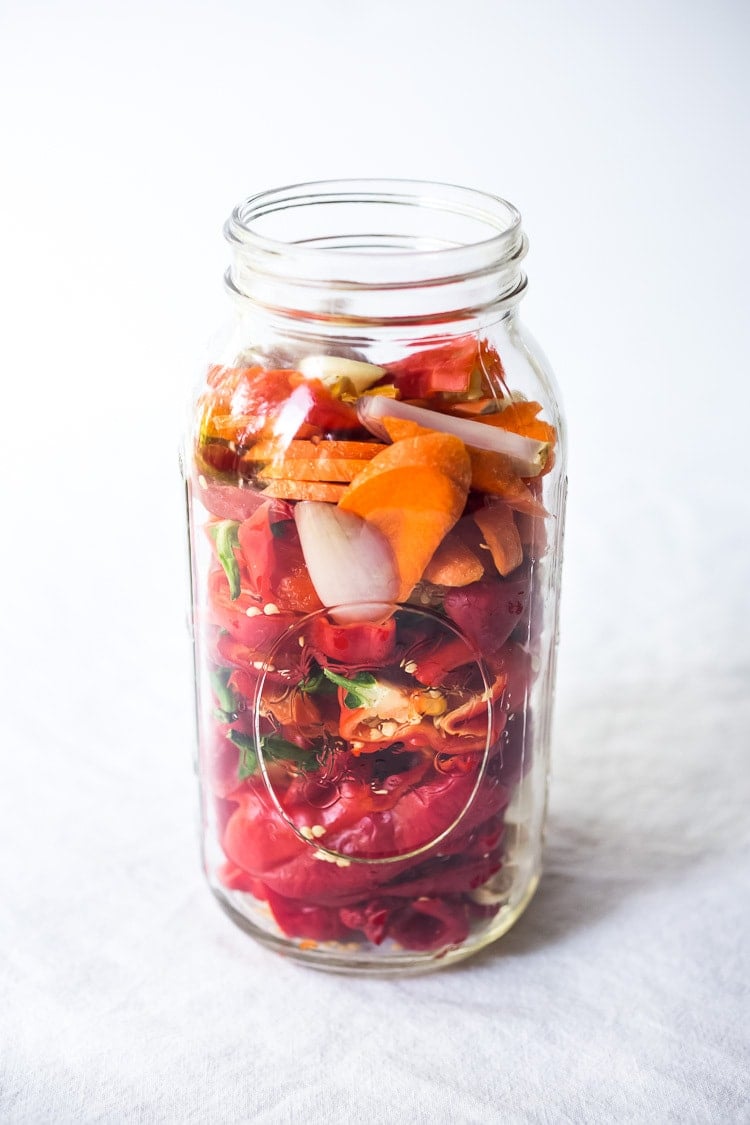
How to make Fermented Hot Sauce:
Step one: Fill a clean 2-quart jar with any type of fresh hot chili, onions, garlic and thinly sliced carrot. You can use bell peppers to temper the hot chilis if you want a milder version. Just stick with the same color palette so your fermented hot sauce stays colorful and vibrant.
In this recipe, I used Padrone Peppers, a Spanish variety that had turned red, which I found at our farmer’s market. But feel free to use any kind you want or a blend. You’ll need about 1 pound in total. (You can easily halve this recipe)
Step two: Make a saltwater brine, using 1 1/4 teaspoons fine sea salt, per 1cup of water.
Salt Ratio for Fermentation:
Having the right proportion of salt to water is important. Not enough salt may allow unhealthy bacteria to grow. Too much salt will kill all the bacteria and the chilies won’t ferment. If you need to add more water to the jar, then add salt accordingly.
Use 1 1/4 teaspoons fine sea salt per 1 cup of water. This is roughly a 3% Brine (3 grams of salt per 100g of water).
Here, I used 5 cups of water, so I added 1 1/4 teaspoon salt x 5 cups water = roughly 6 1/4 teaspoons of fine ground sea salt. Heating the water slightly helps the salt dissolve.
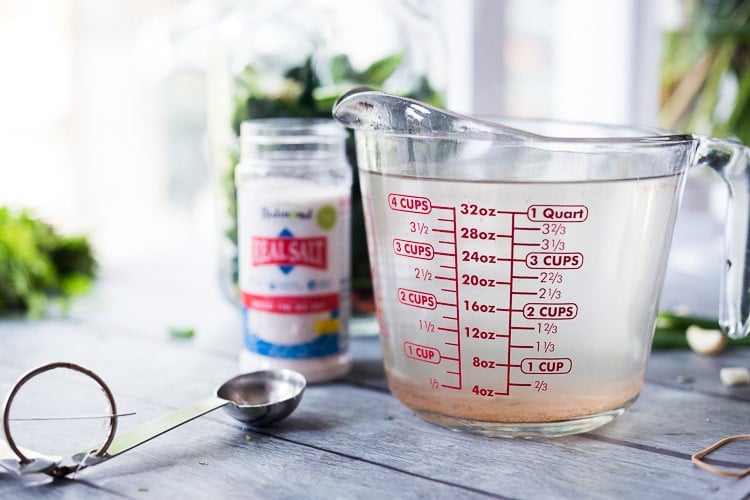
Step Three: Combine! Pour the brine over the chilies and push them down so they are completely submerged under the brine. Feel free to cover the chilies with a cabbage leaf to keep everything down, then weigh them down.
Step Four: Weigh down the chilies. You can use a fermentation weight, like this version that I really like, that will fit perfectly into a mason jar, to keep everything submerged. If anything floats to the top, and touches air, this can potentially mold, so either fish it out with a slotted spoon, or push it down under the brine.
Or in a pinch, a zip lock bag filled with water can be used as a weight, just place this over top. I prefer using a glass or ceramic weight.
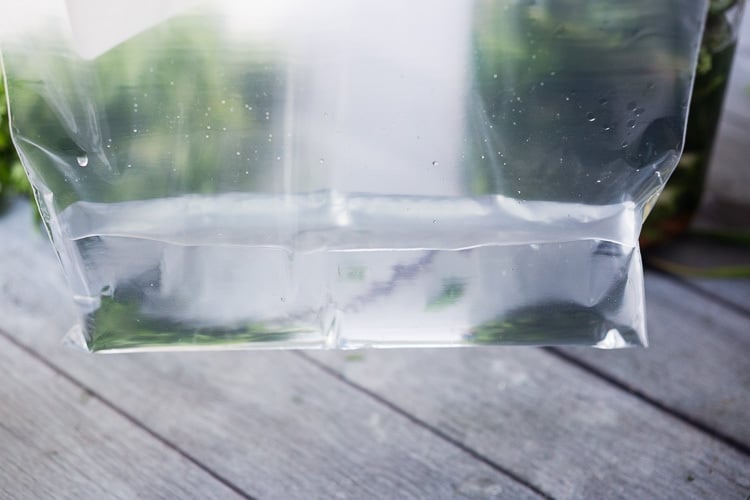
The water in the bag will work as the fermentation weight here. A small clean shot glass, placed over a cabbage leaf, can also act as a fermentation weight as well.
Here you can see I’m working on a mild green hot sauce which is in the fermenting phase still.
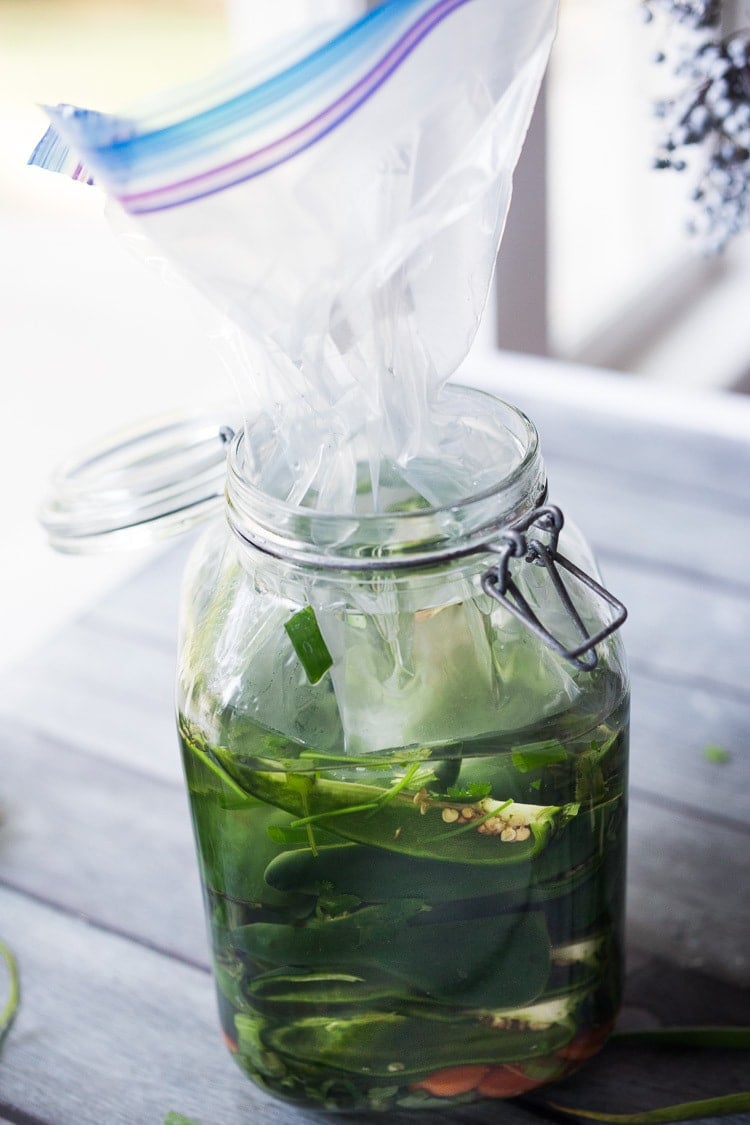
Step Five: Place a lid on top, leaving it loose. You want the fermentation gasses to be able to escape while keeping any creatures (bugs, flies) out. A couple of layers of cheesecloth also work here.
Step Six: Place the jar in a bowl or pan to catch any liquid that may spill over, and place it in a cool, dark place, like a basement. 65F-70F is ideal. If you don’t have a basement or a cool place, a lower cupboard in the kitchen is an option.
Check every few days, removing any “floaters”. After a few days, the brine will turn slightly cloudy, and when you tap the jar, you should see little bubbles float to the surface or some overflow on the pan- all signs of life!
Ferment 5-10 days. I usually go 7-12 days, long enough to soften those carrots, which you will be blending up in the sauce.
If, for some reason, you are going out of town, you can always place the ferment in your fridge, which will slow it down, but keep it alive, and you can resume when you get back.
Why is the Brine Cloudy?
Cloudy, tangy brine is a natural by-product of the fermentation process- a combination of lactic acid and yeast- and is the reason why they call it Lacto-fermentation.
Various strains of bacteria are present on the surface of all plants, especially ones growing close to the ground. Lactobacillus bacteria convert sugar into lactic acid, preserving the peppers.
Both salt and lactic acid prevent the growth of harmful bacteria. Over time, the cloudiness can settle out of the brine to the bottom of the jar. Some batches are naturally cloudier than others, but all are safe to consume.
A cloudy brine is a sign that you have a safe, successful, and tasty ferment.
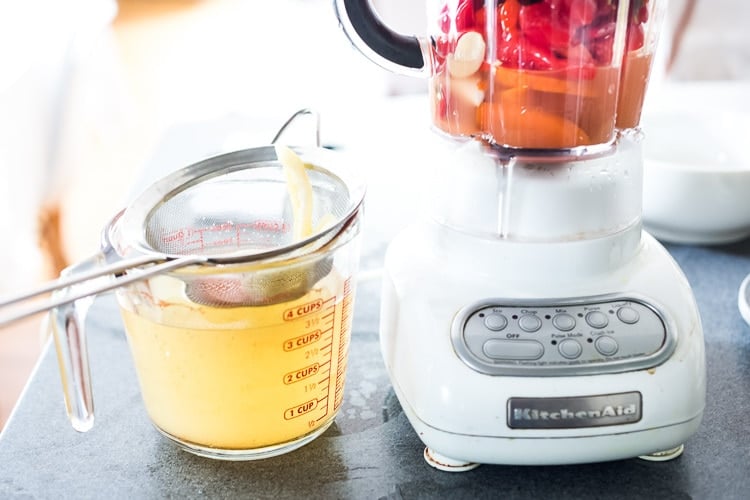
Step 7: Blend! Strain the brine, saving it. Add the strained chilies/carrots/garlic to the blender with one cup of brine and blend until smooth, a least a minute! At this point, you can add herbs (oregano or cilantro is nice here) and spices (cumin, coriander, chipotle). Add a little splash of Braggs apple cider vinegar if you like (this is optional but also full of healthy bacteria) and more brine to desired consistency.
If you like the idea Sriracha, you could also make it sweet by adding sugar or honey, and perhaps ginger. You could also add herbs.
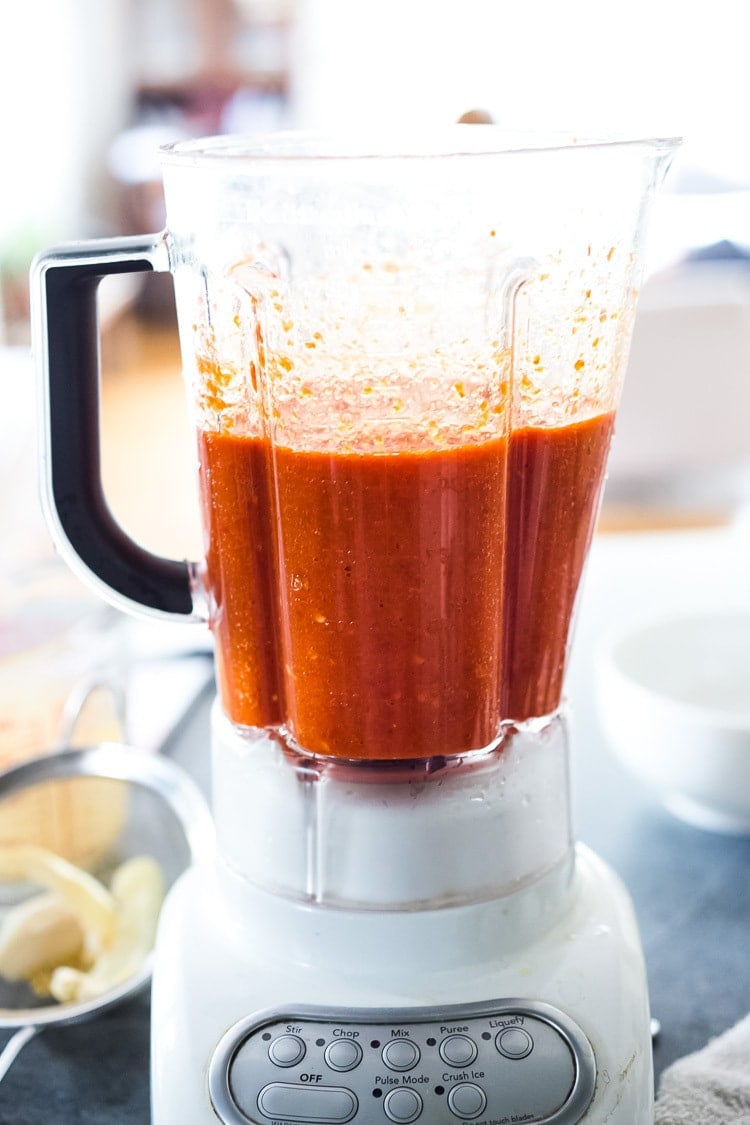
Step 8: Store! For everyday use, store the fermented hot sauce in squeeze bottles– leaving the tip off or open (or lightly closed) in the fridge. The hot sauce will continue to ferment in the fridge, and the open tip will allow the gasses out. Before using, cover the tip with your finger and give it a good shake.
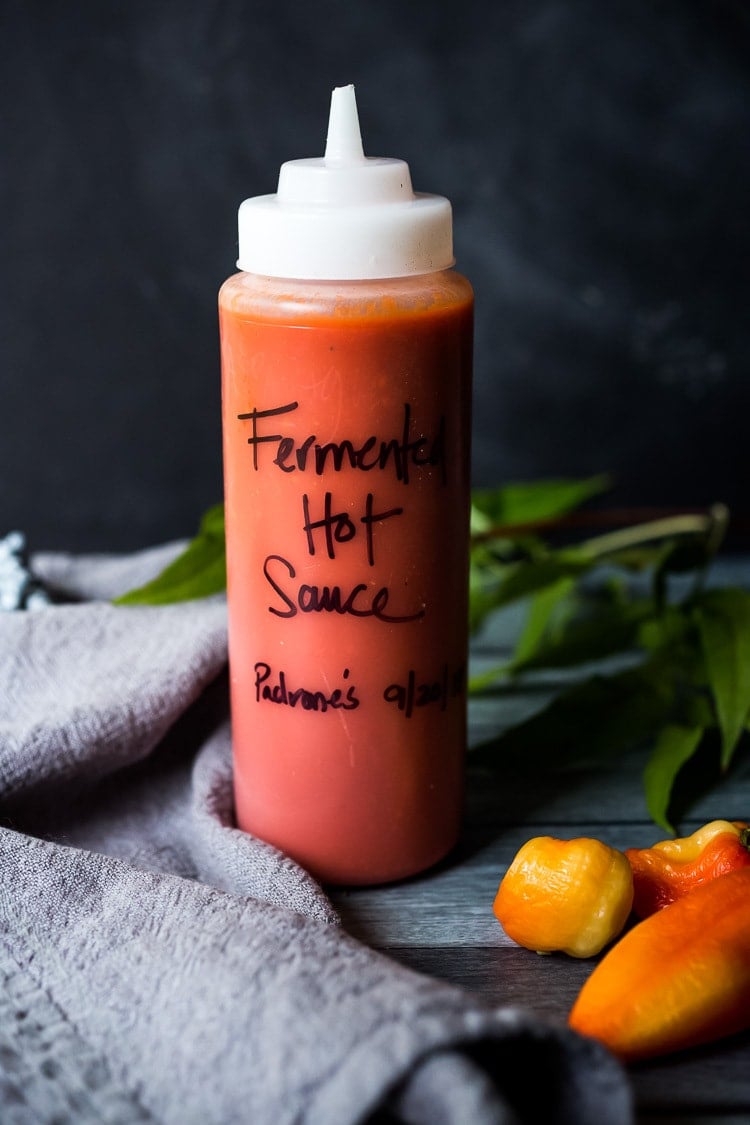
A little Warning!
If you place the fermented hot sauce in tightly sealed bottles, unrefrigerated, they will EXPLODE! This is because the hot sauce is still fermenting (producing gases) and will continue to create bubbles. Remember, it is alive, and this is NOT canning.
*If giving as a gift, yes, feel free to use a “cute bottle” but with instructions to refrigerate and loosen the lid.
But my hot sauce is way too hot!
Don’t be too alarmed if your hot sauce tastes overly hot when you first store it. After a week or two in the fridge, the gradual slow fermenting will substantially mellow out the heat! It’s quite surprising. Many times, I’ve made a hot sauce and tried it, thinking there was no way we would be able to eat it because of the heat level. But after a week or two, it really does calm down the heat. Fermenting the hot sauce gives it another layer of flavor, adding more and more complexity. This will keep indefinitely in the fridge.
Types of chilies to use:
Use any fresh chili pepper you like or a blend of different peppers (in the same color palate). To temper the heat, feel free to add similarly colored bell peppers (red, yellow, or green bell pepper). For example- add a golden bell pepper to habaneros to temper the heat. Or a green bellpeper to serano chilies.
Keep in mind you will be blending the sauce, so stick with the same color palate to make a vibrant-colored sauce. For example, mixing red and green peppers will yield a brown hot sauce- not the prettiest, but up to you. 😉
Also, keep in mind that fermentation will mellow out the heat of the peppers over time.
I am hearing that frozen peppers can be fermented ( please read the comments), but have not personally tried this.
Helpful tools
- Fermentation Kit (optional)
- Fermentation weights
- 2-quart mason jar (8-cup mason jar)
- Blender
- Strainer
- squeeze bottles
Making Fermented Hot sauce is a fun little project that only takes about 20 minutes of hands-on time. A lovely way to use up all the chilis in your garden (or a way to try out all the beautiful varieties at the farmers market) and a healthy way to bring more healthy probiotics into your life!
Mother Nature will do all the work for you! And after 5-7 days, you will end up with the most delicious, alive hot sauce that will get better and better with age!
Troubleshooting
- If there are no signs of fermentation, double-check you measured the salt ratio correctly. This is typically the most common problem (adding too much salt will halt the process and kill all the bacteria, even the good ones.).
- Try filtered water. Chlorinated water can halt fermentation.
- Do not over-wash or peel the peppers/carrots (for example, don’t use any type of produce soap) as the wild bacteria from the pepper skin, carrot peeling is what is starting the fermentation. I have the best luck with farmers’ market chili peppers and carrots because they are not over-cleaned or treated with anything.
- Mold: If your ferment has molded, something likely rose to the top of the jar and had contact with air. I would start over.
- Bad smell: the brine should smell tangy, garlic, and fresh, not “foul” in any way! If it smells “off,” it could be that salt was mismeasured or the ferment was contaminated: dirty hands, dirty utensils, dirty jar.
More Favorite Ferments!
- How to Make Kimchi!
- Simple Cabbage Sauerkraut
- Beet and Cabbage Sauerkraut
- Probiotic Gut Shot
- Curtido & Cultured Salvadoran Slaw
- How to make Fermented Pickles!
Watch HoW to make Fermented Hot Sauce!
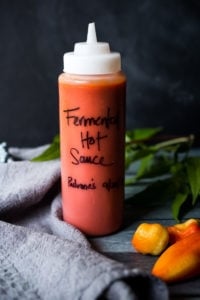
Fermented Hot Sauce
- Prep Time: 20 minutes
- Cook Time: 5 days
- Total Time: 120 hours 20 minutes
- Yield: 4 cups 1x
- Category: Sauces, fermenting, preserving
- Method: fermenting
- Cuisine: American
- Diet: Vegan
Description
A simple, delicious recipe for Fermented Hot Sauce using fresh summer chilies, with no special equipment and only 20 minutes of hands-on time!
Ingredients
Saltwater Brine: ( 1 1/4 teaspoon salt per 1 cup of warm water) This is roughly a 3% Brine. (3 grams of salt per 100g of water)
- 5 cups filtered water
- 6 1/4 teaspoons finely ground sea salt (or Pink Himalayan salt) – use 1 1/4 teaspoon salt, per 1 cup of water.
- 2 Quart Mason Jar
Fillings:
- 16 ounces fresh chili peppers, sliced in half (about 6-7 cups) seeds & stem removed, see notes
- 1 carrot, very thinly sliced 1/16th-inch (do not peel!)
- 4–8 garlic cloves, cut into quarters
- 1–2 shallots, sliced (or 1/2 an onion)
After fermenting, add optional seasonings to taste. Keep in mind the “heat” will mellow with age.
- optional: herbs (oregano, cilantro, celery leaves) and spices (cumin, coriander, chipotle powder, smoked paprika)
- 1–3 tablespoons apple cider vinegar, (optional- for extra tang and for more healthy probiotics)
- honey or sugar to taste (optional, good if making Sriracha style)
- If your hot sauce is not hot enough, you can always add cayenne or ground chipotle to taste. Free free to add spices ( 1/2- 1 teaspoon) cumin, coriander, chipotle, allspice, etc. Make this your own.
Instructions
- Wash your hands, jar and ustensils. Not sterilized, just clean. 🙂
- Stir sea salt into the water until dissolved.
- Slice the small hot peppers in half, and remove stems and seeds if you like (for less heat). If your pepper are very hot, wear gloves. If adding bell peppers to temper the heat, cut into thin strips. Thinly slice the carrot (do not peel), slice the shallots, and slice the garlic.
- Layer all into a clean 2-quart mason jar. Top with a cabbage leaf to hold things down (optional) and pour the brine into the jar over the chilies, pressing them down under the liquid. If you need to add more brine, remember to use the ratio of 1 1/4 teaspoon salt per 1 cup of water.
- Weigh everything down with a fermentation weight (or use a small ziplock bag filled with water to weigh the veggies down or try a clean shot glass). You want the chilies completely submerged under the brine. Anything that touches air, may mold, so either spoon it out or push it down. Cover loosely with a lid ( or cheesecloth and rubber band) and place the jar in a pan or bowl to collect any liquid that may bubble over. The lid is loose here so gasses can escape easily, but no creatures can get in.)
- Place in a cool dark place, like the basement, 65-70F is ideal, (or the bottom cupboard in the kitchen) for 5-10 days or until signs of fermentation.
- On day 3-5: Check for fermentation: Tap the container and see if any tiny bubbles rise to the surface, check for a cloudy brine ( see notes) or check the bowl underneath, to see if there was any overflow. All signs of activity! Ferment 7-10 days, long enough to soften those carrots that you will be blending. And you can always ferment longer for even more flavor- I’ll often ferment 12 -14 days. Sometimes I’ll ferment 7 days, then place the jar in the fridge for a few weeks before blending. The longer the ferment, the tangier and more flavorful this will become, and the more mellow the heat. *If there are no signs of fermentation, give it a couple more days- then check the troubleshooting section in the post.
- After 7 days and signs of fermentation, strain and SAVE the brine. Place the fermented peppers, onions, garlic, and carrots into a blender and discard the cabbage leaf. Add 1 cup of the brine and blend until smooth as possible. This may take a couple of minutes. Add the vinegar if using, (and honey if you prefer a sweeter hot sauce like Sriracha), and more brine to desired thickness. At this point, you can blend in optional spices and herbs. ( 1/2-1 teaspoon spices, 1-2 tablespoons fresh herbs).
- Don’t be alarmed if it is overly spicy- the heat level will significantly mellow with time, as it continues to ferment in the fridge after 1-2 weeks. Place in a squeeze bottle and store in the fridge, leaving the tip open (or loose) for gasses to escape.
- Do not place in a sealed jar unrefrigerated– this will result in an explosion– and a great big mess- as the hot sauce is still alive and fermenting! BE WARNED! I have the best luck with using in squeeze bottles and leaving the cap off in the fridge.
- If transporting to a friend as a gift, it is ok to seal for short periods of time (a few hours) but make sure to tell them to refrigerate it and loosen the lid, very soon after receiving.
- The flavors will continue to develop and get more complex over time, the heat mellowing.
- To use, cover the tip of the opening with your finger and give a shake before using.
- This will keep up to 12 months in the fridge (probably even longer!).
Notes
WATER: Regular tap water may contain too much chlorine in it, inhibiting the fermentation process (although our tap water works fine). If fermentation is not happening, you may want to try filtered water.
SALT: I use fine ground sea salt or Pink Himalayan salt . If using coarse ground salt you may need to add a pinch more.
Peppers: Use any chili pepper you like or a blend of different peppers (in the same color palate). To temper, the heat, feel free to add similar colored bell pepper -substitute sweet red, yellow, or green bell pepper. Keep in mind, you will be blending the sauce, so stick with the same color scheme to make a vibrant colored sauce. For example, mixing red and green peppers will result in a brown hot sauce– but up to you. 😉 Also, keep in mind, the fermentation will mellow the heat a little. Removing the seeds will help temper the heat.
RATIO: If you need more water to cover or fill the jar, use 1 1/4 teaspoon salt per cup of warm water.
You could easily halve this recipe or use two, quart-sized jars.
CLOUDY BRINE: A cloudy brine is a natural by-product of the fermentation process-a combination of lactic acid and yeast and is the reason why they call it Lacto-fermentation. It is a sign of fermentation. Various strains of bacteria are present on the surface of all plants, especially ones growing close to the ground. Lactobacillus bacteria convert sugar into lactic acid, preserving the peppers.Lactic acid prevents the growth of harmful bacteria. Over time the cloudiness can settle out of the brine to the bottom of the jar. Some batches are naturally cloudier than others, but all are safe to consume and taste delicious. A cloudy brine is a sign that you have a safe and successful ferment.
Signs of fermentation: liquid overflowing into the bowl (check the bowl to see if the jar overflowed, a good sign! Tiny bubbles rising to the top when you tap the jar. Cloudy brine, tangy flavor or smell.
Nutrition
- Serving Size: 1 tablespoon
- Calories: 4
- Sugar: 0.4 g
- Sodium: 112.3 mg
- Fat: 0 g
- Saturated Fat: 0 g
- Carbohydrates: 0.9 g
- Fiber: 0.2 g
- Protein: 0.1 g
- Cholesterol: 0 mg
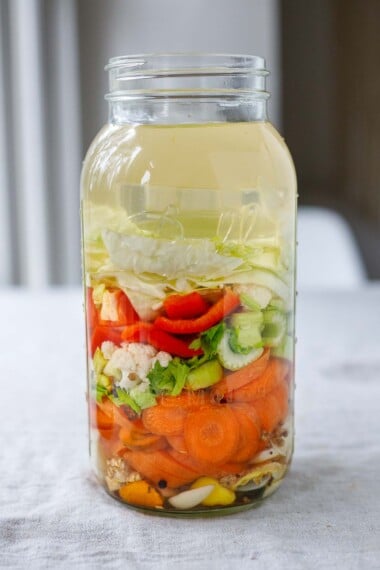
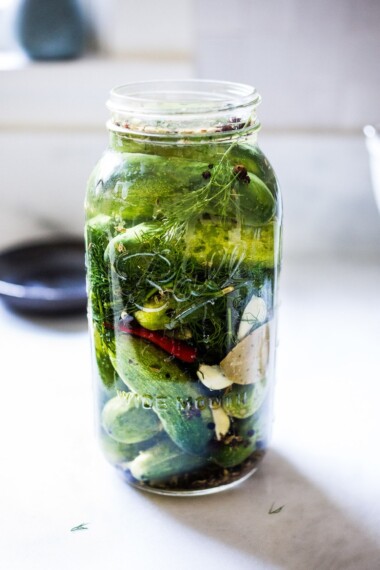
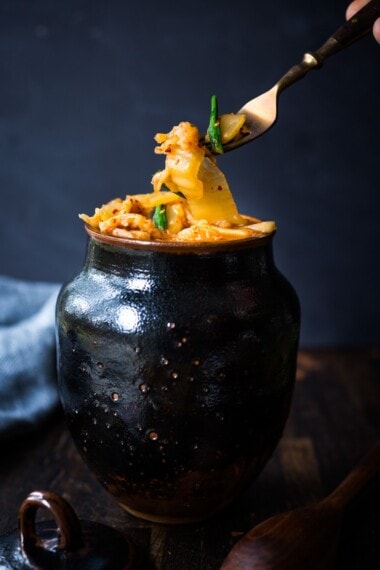
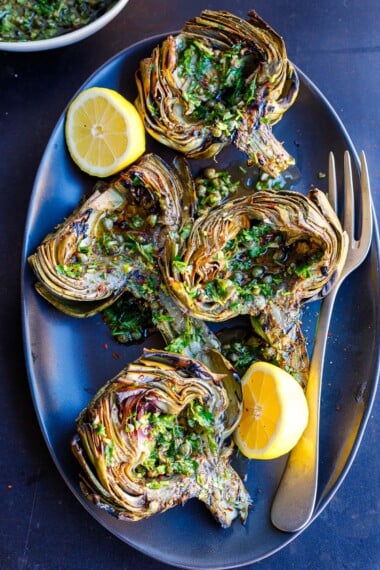
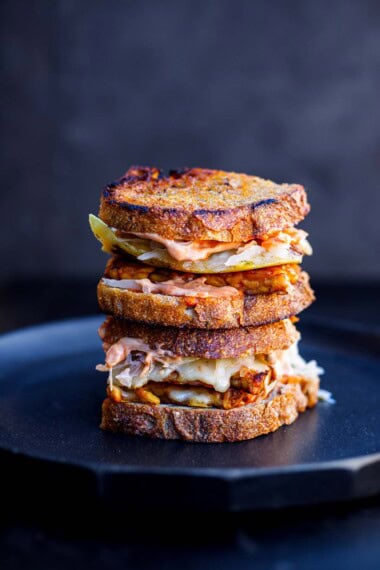
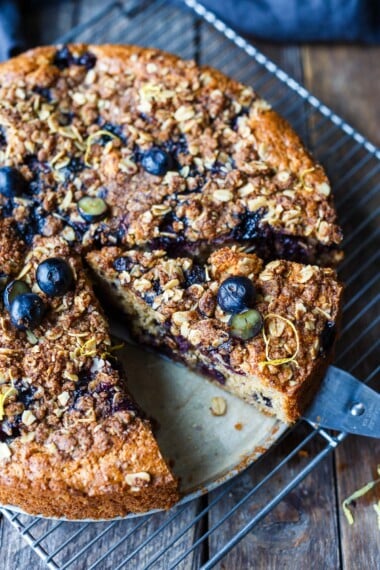
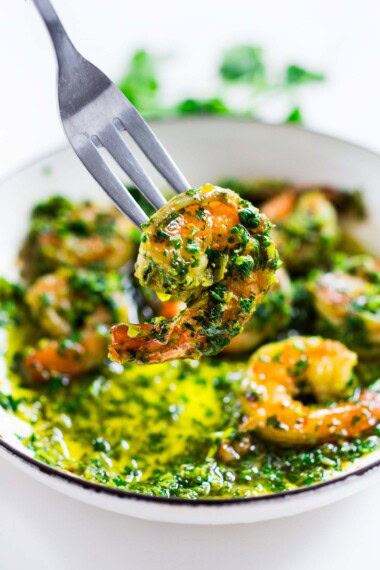
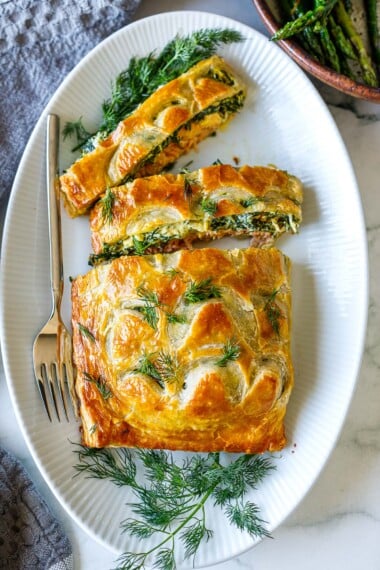
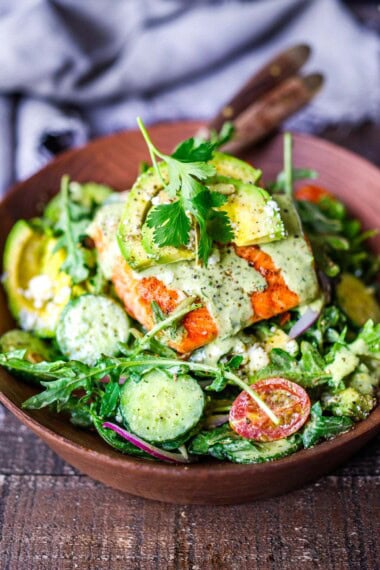
I don’t have a squeeze bottle. What would be the next preferred storage method?
A bottle with a loose lid.
So just barely screw on the lid? Just as the grooves meet like on a Mason jar?
That’s what I would do, yes. Because it is very slightly fermenting in the fridge, some bubbles may want to escape. 😉
Can you used whole dried chilies?
I’m not sure they have the bacteria needed to ferment. Fresh is best.
Really fresh tasting
I used frozen habaneros for a batch yesterday. How come you don’t recommend frozen?
Hi Anthony- let’s wait and see what happens. I’m not positive, but how I understand it is… the peppers need the wild living bacteria on its skin to begin the fermentation process. Freezing may kill this bacteria? But I’m not 100 percent sure. Also, there may be enough bacteria from the other ingredients (carrots, onions) to get this going. Check for any bubbling or activity after 5-7 days. Can you tell me what happens? Very Curious!
You have two different types of fermentation.
Lactobacteria which makes lactic acid from sugars, or yeast which makes alcohol from sugars. If your salt content is high enough it’s usually the lactobacillus that is reacting since the yeast will die.
Frozen just hibernates the bacteria, unless you have one of those crazy -40 F freezers, but usually the bacteria is going to be floating around your kitchen air anyway (scary!!) so you can use frozen veggies too if you’d like, but the water content will be different so you’d have to adjust the salt and spices
The frozen habaneros worked out great! I had plenty bubbles and signs of life! I actually still have them fermenting and will mix the hot sauce tomorrow. I’m super excited! I have some fresh mangos and will add Braggs apple cider vinegar. Thank you for your recipe!
Watching the peppers ferment has kept me sane during quarantine (or have I gone insane?? lol)
Oh that is awesome! great to hear. Love your flavor combo- sounds lovely!
So you made the recipe as written with your frozen peppers and it turned out well, correct? Tia.
I make many of your recipes and love them! but I have to say i think this was a fail for me. I placed wax paper on top to keep the veg. down. On one jar, I had mold and think I need to ditch it. The second jar, i was able to scoop the mold off the side where it was developing. Should I ditch it as well, or do you think it ill work? any ideas what might have gone wrong? I used clean jars …
Hi Marlene, I’m sorry about that. The mold is from air coming in contact with the veggies/peppers. You need to use a weight of some sort. A small zip lock filled with water works well, fermentation weights or even clean smooth stone even works! If you can scoop the top layer off, getting all the mold, the underneath should be fine.
THis is so cool! But how come some sights say only good in due for a few weeks or months unless you boil? That would ruin the nutrician I’d think. Just made my first mini batch: fermented for five weeks then made the hot sauce with brine solution and vinegar and stuck in fridge.
I have not actually fermented anything, I just got my supplies and I’m looking for recipes. I have a favorite sauce that has tomotillas in it. Would I add that to ferment or after when I blend it?
I think you could do it either way. If you ferment them with the peppers, slice them- and you may have to adjust the salt/water brine (adding more). Keep brine proportions the same. 1 teaspoon sea salt per cup of filtered water.
You said “I prefer this method over canning because canning kills all the healthy bacteria” but doesn’t vinegar also kill all the bacteria?
Pickling does, but the amount of vinegar here is so small.
I have a question regarding the chillies. I have a lot of chillies in my freezer that I just do not know what to do with. I’ve considered making a sauce out of them. Will they still ferment even though they’re frozen? They’ve all been frozen whole most still stemmed.
I think freezing may kill the bacteria that is needed to ferment. I’m not 100 percent positive on this- maybe others know more out there? But this is my hunch.
Yes, you might have troubles with the frozen chillies. Try to add a little bit of liquid (brine of another fermented ingredient?) to help the process..
So I used a slightly different recipe, with only brine and chillies. So it was around 80% frozen and the rest fresh. After a few days, the liquid started spilling out, so it must have been working. But I took some out to ease it, and it seemed to stop bubbling but lots of sediment floating. But now a couple weeks on and it’s bubbling away. Looks amazing.
I used frozen chilies when making this recipe last year and it worked great – the smell was enough to knock your socks off and the flavor was amazing! Only just finished the first batch and am ready to make my second batch with fresh chilies this time.
Hello, I am new to the world of making hot sauces and I understand that there are different methods, though I am still unsure of how this all works.
One thing I notice is that some advocate for cooking the hot sauce before bottling to make it safe for storage. Does fermenting the sauce make this unnecessary?
Hi Tony, both ways work, but not together. You can cook and bottle for long term storage, unrefrigerated. Or you can ferment, keeping hot sauce “alive” for long term storage but in your fridge. Cooking it kills off all the bacteria. Fermenting, kills off unhealthy bacteria, while keeping the good healthy bacteria alive (good for gut health). So you do one or the other.
Actually, you can definitely cook it afterwards and store it out of the refrigerator. The only thing is that it will not continue its fermentation and so it will remain at the level of complexity that it was at the time of cooking. Allowing it to mature uncooked gives the most complexity. A good experiment to try might be to let it mature for several months in the refrigerator and THEN pasteurizing and bottling.
Right, but won’t you kill all the healthy probiotics?
Curious if anyone had any issues with a separation of the final product after blending the fermented peppers. Maybe I need a better blender?
I sometimes ( not always) get a tiny bit of separation- and just shake the bottle before using.
Hi! Keen to try this. If I was to add mango, would it be best to do this for fermenting or afterwards? Thanks!
I love that idea. I think it should ferment fine?
Followed brine formula exactly and added green bell and yellow banana peppers, plus onion, garlic, and cilantro, all suggested by website. Used purified – not tap – water. Used zip lock bag and water for weights. The only difference is I used a gallon jar versus a two quart jar, but this should not matter. Regardless, fermentation DID NOT happen, even after six weeks. My son has fermented peppers several times with great success, but WITHOUT the extra ingredients. He thinks – and I agree – that onions and garlic kill the bacteria you need for fermentation. Pro tip – only put peppers in the brine. Leave out the fluff and only add it after fermentation is complete. Your results will be much better.
Thanks, and sorry to hear that. The onion and garlic do not kill the fermentation, I don’t think that is the issue. I’ll think more about this. What salt did you use? is it possible the salt was measured incorrectly? That is always my first guess.
And was it table salt (iodine) or actual salt?
yeast/bacteria are not vampires and are immune to garlic and silver
I have only been fermenting since this summer so I’m really new and learning. I’m a pepper grower and have been fermenting lots of peppers. My question is this. The mash I have right now is VERY hot. Can I tone it down after fermentation? Or would it be better to ferment carrots, red bells and a little sugar before making the hot sauce?
I would ferment the carrots and mild sweet peppers first.
I have a question regarding the chillies. I have a lot of chillies in my freezer that I just do not know what to do with. I’ve considered making a sauce out of them. Will they still ferment even though they’re frozen? They’ve all been frozen whole most still stemmed.
Freezing the chilies to my knowledge will most likely kill the bacteria required to ferment. Does anyone know otherwise?
Just made my first batch and it tastes delicious! I added some pineapple and papaya to the mix for a little sweetness. I bottled it after about 10 days when it was still bubbling. My questions is I am planning to include the bottles in Christmas baskets that may sit out (and not be refrigerated) for a few days. Will the fermentation continue in the bottles and if so, will that cause them to leak? I used the small, thin commercial hot sauce bottles with plastic dosers and screw top lids. Thanks in advance for your advice.
I would keep them in the fridge or else, leave space at the top with very loose lids- or burp them daily. They WILL continue to ferment. A tight lid, unrefrigerated will result in bubbles actually exploding the bottle! Be warned!
I can attest to this. Exploded all over kitchen and me. Lots of cleanup!
Hi I am in the process of making this and I have a quick question – by “sea salt” do you mean fine-ground (like table salt) or more coarse ground (like kosher salt)? I used the latter and just want to make sure I’m on the right track. I’m on day two of fermenting so I think i could still adjust the brine if needed. So excited!
I used fine ground sea salt or Himalayan Pink sat. Maybe add a pinch more? I will adjust recipe notes. Thanks so much for clarifying.
You should not use iodized salt (table salt) as it can inhibit the fermentation process.
I plan on making this recipe, I love the idea of fermenting the peppers and such. My question is, can the peppers/garlic/carrot be roasted or gently fried prior to fermenting?
It is my understanding that you need the bacteria from raw veggies to start the fermentation process. Roasting would kill these off. But I bet if you started fermenting a batch of raw peppers/carrots, then after these have fermented, and you are about to blend, you could blend in some roasted peppers, garlic and carrots, with a little of the fermented brine? I’m totally guessing here, but that is what I would do. 🙂 I love the idea of this and actually may try it! Thanks for inspiring me! Let me know how it goes…
I plan to make this next week. I’ll use my 8 cup glass jar with the snap lid and rubber gasket. Should I snap the lid closed and burp it daily, or should I leave the lid ajar and leave it alone while it ferments? Thank you.
I think either would work!
Thanks for the recipe. A couple of suggestions:
1/Rather than a plastic bag use an apple (trimmed to fit) or some orange peel. You get natural goodness and some nice flavor while keeping peppers submerged.
2/ Set the fermentation jar in a bowl to catch any overflow from the fermentation and set in a cool dark place, like a closet or cabinet. Burp it daily. I just did a jar of habanero and let it ferment for 3 weeks to get it really mellow.
Perfect thanks for sharing the apple trick!
I plan to use this recipe, next week. BUT I have 2 questions.
1. I grew a mix of cayenne, Ghost and Carolina Reaper peppers and FROZE them, over the season. Is there anything I need to do different in processing?
2. I have been told, that capsaicin can “eat” through some materials but noticed you are using plastic squeeze bottles. What is the best storage container for extremely hot sauce?
So using frozen peppers will probably not work here. The fresh bacteria on the peppers that is needed to ferment is probably dead from being frozen? I keep big my batches in mason jars and just put a little hot sauce in the squeeze bottle for easier use. I do think that fermenting mellows out the heat.
I decided to try this recipe with my “frozen” peppers, since bacteria is supposedly not killed by freezing. I am 2 weeks into fermentation and there is a whitish fungus looking stuff, settling to the bottom of the jars. i have pictures that show this better than I can describe. Is there anyway I can email to you? Other than that, the peppers are still bubbling and holding their color. Thanks!
Hi Susan. So interesting!!! I thought freezing killed the bacteria? It sounds like it is it doing well. My email is sylvia@feastingathome.com
Hi Sylvia, this is a follow up a long time in coming but the frozen peppers did not work! I ended up with mold. I have started another batch about a week ago using fresh peppers this time and is going great.
Great to hear!
Did you ever find out what the white stuff was at the bottom of the jars? And did they turn out ok using frozen peppers?
Can I make something else with the leftover brine?
We did 7 days and I just finished blending it and bottling it. HEY BTW don’t smell it when you take the lid off. (LOL) It’s so delicious and exciting. I can see where the sky is the limit. We made ours with green serranos and a few poblanos. I added a tsp of coconut sugar, and used 2 1 quart jars, other than that didn’t tweak the recipe. Thank you for posting it.
Hi, glad you like it! I use the brine as a tonic, drinking a shot of it now and then! Or its delicious added to soups, stews, and other things you are making. A little whipped into hummus is good too!
I have used this procedure before with excellent results. I refer back from time to time in case I have forgotten anything since I last made Hot Sauce. To all that I had given the sauce to all have said it is excellent and I should market it.
Haha! Im sure someone will, if you dont. 😉 Im happy you like it Jerry! I just blended up a batch myself last night….so tasty!
I’m planning on attempting to ferment for the first time and make some sauce, only question I have is there any signs to beware of in terms of possibly dangerous bacteria growing etc?
made this for christmas gifts last year and everyone raved about it!
Great to hear!
Just did it with my homegrown Cyclon Pepers and it’s great! Wonderfully easy recipe. Thank you!
Great to hear!
amazing